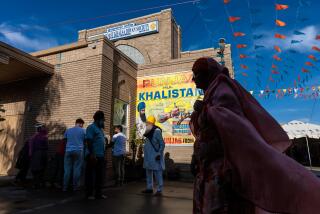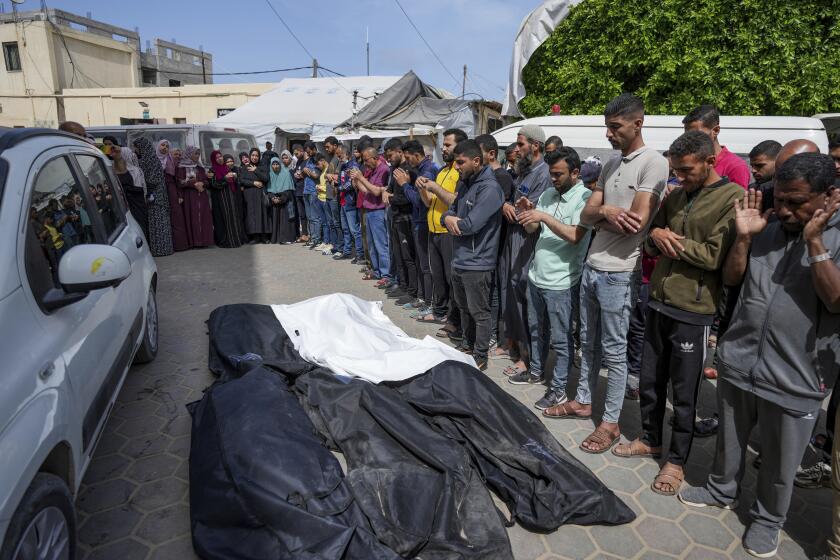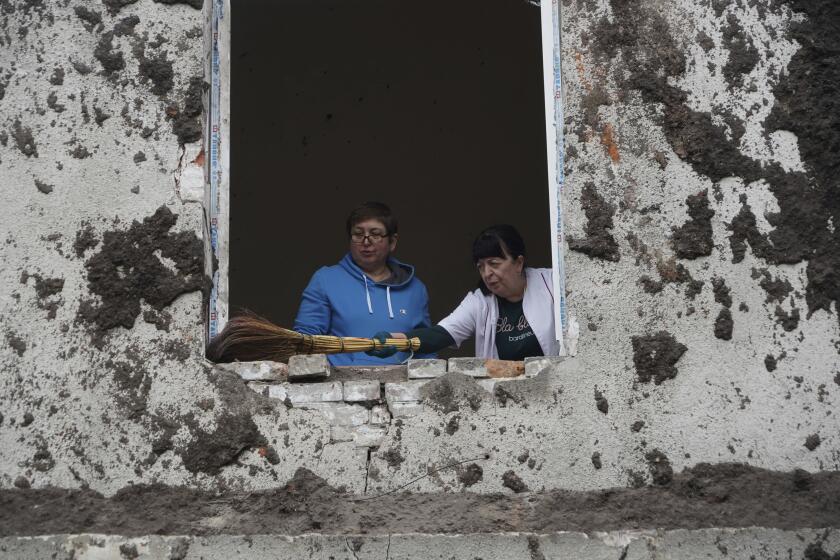Little recovery in Myanmar
Beaten down by a ruthless storm, unscrupulous money lenders and their own government, farmers in Myanmar’s rice bowl are long past being angry. They are too hungry, too tired and too fearful of what lies ahead.
Nearly five months ago, Tropical Cyclone Nargis tore through southern Myanmar, killing at least 85,000 people. Thousands still are missing, probably washed out to sea. The death toll is estimated to be 110,000, making it the second-deadliest named cyclone on record.
Those who survived lost what is usually their biggest harvest of the year. The next one is due in November, but farmers are struggling with a late start, bad seedlings and high fuel prices.
The country’s economic mismanagement has left people dependent on rice for a larger share of their diet, but military rulers still are exporting it even as they put up obstacles to international aid. Total production this year could be down anywhere from 20% to 70%. The shortages and high prices could pose a threat to the military regime, which has ruled since the early 1960s.
Kow Win Hlaing’s eight acres were flooded with seawater during the storm, and he was a month late replanting. He got free seedlings from a Buddhist monastery and from other donors, but many are of such poor quality that they don’t grow properly, he said.
Making matters worse, he had to go into hock to buy diesel for his tiller and fertilizer. He expects the harvest from his paddies, located a two-hour riverboat ride south of Bogalay, to be about 60% smaller than last year. The $840 the farmer borrowed from a local money lender is more than three times the amount he expects to earn this year.
His face creased with worry and fatigue far beyond his 37 years, Kow Win Hlaing is ready to give up.
“I lost all my savings for the last 10 years to Nargis,” he said. “I don’t want to be a farmer anymore.”
More than 2.1 million survivors still depend on food aid and other assistance, according to the United Nations. Most live in makeshift shelters cobbled out of bamboo poles and blue and orange tarps that strain under the weight of torrential monsoon rains.
Large white tents emblazoned with UNICEF in blue letters serve as schools for thousands of children, some of whom show signs of malnutrition.
Farmers were bringing in the summer harvest as the cyclone bore down on the delta, driving a towering storm surge that wiped out their granaries and flooded their paddies with saltwater. About 90% of the May harvest was lost, said Shin Imai, who runs the U.N. Food and Agriculture Organization’s operations in Myanmar, which also is known as Burma.
It was a crushing loss because most farmers plow any profits from the spring harvest back into their paddies, hoping to maximize output from the later, monsoon crop.
The military government tightly restricts access to the delta and has set up more than a dozen checkpoints to try to catch foreign journalists who travel by boat to avoid roadblocks on the main route over land from Yangon. But it’s still possible to slip through and speak with survivors. They bitterly shrug off the ruling generals’ rosy promises of a bumper harvest.
Imai said it was too early to make a firm estimate but that total rice production might be down 20% to 25% this year. But farmers say it will be much worse.
Cyclone survivors blame official restrictions on relief operations as well as corruption and the money squeeze for delaying replanting by weeks, even months, and draining what little funds they have left.
Many have taken risky loans to pay for seedlings, fertilizer and other essentials. With the next harvest just weeks away, they are bracing for another sharp drop in income, and a further fall into debt.
On the global market, rice hit about $1,000 a ton this year, but has slipped to about $750, Imai said. The price here, however, has only fallen slightly. It is at least 25% higher than last year, and if the November harvest is as bad as many farmers expect, it could go higher still.
Myanmar’s government does not allow seed imports, so relief agencies had to scramble to find supplies from in the country and then overcome enormous logistical problems to distribute them.
When Imai flew over the delta by helicopter in early July, he estimated less than a quarter of the farmland had been replanted. After an intense aid effort, that figure is now 98%, he said.
The cyclone also killed 137,000 water buffaloes, leaving many farmers without draft animals to prepare their fields, Imai said. In addition, 92,000 cattle perished, devastating local milk production.
The Food and Agriculture Organization and other agencies supplied 2,700 buffaloes to farmers, who shared the animals. Others relied on 275 power tillers that aid workers distributed, said Imai.
But farmers say they have to buy fuel for the machines at black-market rates and that bad quality or lack of fertilizer is stunting the crop.
Ko Myo Myint Aung, 34, was traveling with a boatload of farmers recently to Bogalay to plead with United Nations Development Program staff for more help. Local lenders are charging 10% interest, he said, so farmers are wary of borrowing to buy the fertilizer they need.
Another farmer on the trip, Myint Aung, said he lost 27,600 pounds of rice in the storm. Only the poorest and the wealthiest, well-connected farmers got free aid, he said; he got enough to replant less than 1% of his 12 acres. Even that was no good, he said.
He tried planting half if it, and nothing grew. He and his family ate the rest, he said. It wasn’t any good for that, either.
“It’s like food for pigs,” he scoffed. So he paid inflated prices for as much seed as he could. He couldn’t afford to plant all of his land, and he expected this harvest to be down 70% compared with a year ago.
Like many here, Myint Aung is afraid help will be even harder to find when winter sets in. He expects to face the next crisis alone.
“People in the government only take care of themselves,” he said. “Aid for farmers like me has been super slow. There’s no hope, no future for us. Just worries over what happens next.”
More to Read
Start your day right
Sign up for Essential California for news, features and recommendations from the L.A. Times and beyond in your inbox six days a week.
You may occasionally receive promotional content from the Los Angeles Times.






